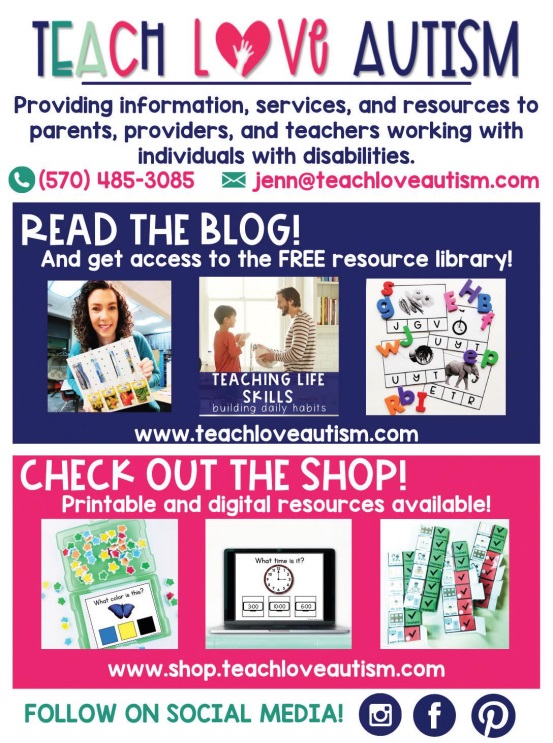By providing the child with the right tools and support, we can help make the experience less stressful and more successful. One of the first things to consider is how to best communicate with the child. Many children with disabilities may have difficulty understanding or expressing themselves, so it is important to use clear, simple language, and to provide visual aids if necessary. For example, you can use picture cards, social stories or videos to help explain the process of going to the doctor. It would be great to talk about what kinds of scenarios may arise at the doctor, and what types of tools and vocabulary are associated with a visit.
Another important aspect to consider is the child's personal care B needs. Many children with disabilities may need assistance with dressing, grooming, or other personal care tasks. It is important to work with the child and their family, to ensure that they have the necessary supplies and equipment for the appointment. For example, if the child uses a wheelchair, it is important to make sure that the doctor's office is wheelchair accessible.
Additionally, it is important to provide the child with some sense of control and choice in the process. For example, you can offer choices on what to wear to the appointment, or let the child pick a toy or book to bring along. You may even want to create a visual schedule for the child about the steps of the trip there, things they can do once in the waiting room, and what they will do after. If something the child enjoys can be placed at the end of the visit, this might also help the children be motivated to follow directions during the time of the visit.
It is also important to prepare the child for what they might expect during the appointment. For example, the child might be asked to undress, have their blood pressure taken, temperature taken, or get a shot. Explaining what will happen in a simple, clear way can help reduce the child's anxiety. Using social stories or even mini-schedules can be a great resource.
Using a first aid kit or a pretend doctor's kit can help to simulate the experience for a child with a disability, that may have a fear of going to the doctor, by allowing them to learn about and become familiar with medical tools and procedures in a safe and controlled environment. By allowing the child to play with and manipulate the tools and items in the kit, they can become more comfortable with them and have a better understanding of what to expect when they visit a real doctor.
Additionally, using a first aid kit or a pretend doctor's kit can also help to teach a child with a disability about the importance of selfcare and basic first aid. By learning how to properly clean a wound, bandage an injury, or take care of minor illnesses, a child can gain a sense of empowerment and independence, which can help to reduce their fear of going to the doctor, and may also make them less reliant on others for care. This can greatly improve their quality of life and sense of self-worth, in addition to promoting better health outcomes.
It is also important to consider the child's sensory needs. Many children with disabilities may have sensory sensitivities, such as being sensitive to loud noises or bright lights. If this is the case, it is important to let the doctor's office know, and to make sure that the child's needs are met during the appointment.
Finally, it is important to debrief with the child after the appointment. This can help the child process the experience and understand what happened during the appointment. It's also a good opportunity for the child to express any concerns or ask questions.
In conclusion, preparing a child with a disability for going to the doctor requires a team approach. By working together, educators, parents, and healthcare providers can help make the experience less stressful and more successful for the child. By providing clear communication, personal care support, control and choice, sensory needs accommodations and debriefing, we can help ensure that the child has a more positive experience at the doctor's office. •
ABOUT THE AUTHOR:

Jenn Adams is a special education and elementary teacher living and work in Pennsylvania. She has taught in multiple classrooms, grade levels and settings including regular education, special education, and alternative education. She has taught grades Pre-K, 1st, and 5th12.Currently, Jenn works for a public cyber charter school teaching students in grades 5th through 8th in an autistic support virtual classroom. Jenn obtained her Bachelor's degree in elementary and early childhood education in 2007 from Millersville University. She also obtained her Master's degree in 2014 in special education from Saint Joseph's University. Jenn also added the credentials of becoming a registered behavior technician (RBt) working closely with students with autism and intellectual disabilities working with principles of Applied Behavior Analysis. Lastly, Jenn is currently pursuing her principal's certificate from California University of PA. In her 14 years in education she truly has found that building relationships is what needs to come first and loves learning new ways to reach her students. During her time not spent in the classroom Jenn conducts parent training with colleagues in the special education field and provides information through her blog, website, and social media channels all called Teach Love Autism. Jenn also works hard every day to
